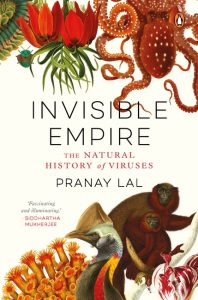
One of the recent discoveries readers have made is an author who is a biochemist working in the field of public health, the rather extraordinary, Pranay Lal.
His first book, Indica: A Deep Natural History of the Indian Subcontinent won the hearts of so many people along with bagging the 2017 Tata Lit Prize and the World Book Fair Award. Indica managed to document facts and history from the world of nature in the geographical boundaries of the Indian Subcontinent that the world wasn’t aware of. This exclusive document turned out to be a huge success because it managed to do something never done before with such extent and elegance.

It speaks about an Indian dinosaur more ferocious than T rex called Rajasaurus, about the Ganga and Brahmaputra sequestering nearly 20 per cent of global carbon, and their sediments over millions of years have etched submarine canyons in the Bay of Bengal that are larger than the Grand Canyon! From caves to crocodiles and gargantuan mammals, this book holds secrets to the tributaries of the natural world inside it!
And after years of waiting, Pranay Lal has returned with more facts and stories and secrets to be revealed in his latest release, Invisible Empire: The Natural History of Viruses.

Virus, the word our ears have been hearing without a pause for the past few years. A virus dominated our lives in a big way and now Pranay Lal takes a dive deep into the history of viruses and gives us the much-needed context, information and detailed accounts of the plethora of viruses that have occupied earth through the years.
The author shows us how everything about viruses is extreme, including the reactions they evoke and how for every truism about viruses, the opposite is also often true. The book takes us into the complex world of viruses, so diverse that it deserves to be called an empire.
Whether we see them as alive or dead, as life-threatening or life-affirming, Pranay Lal makes sure we see the ineluctable beauty, even a certain elegance about the way viruses go about their lives.









